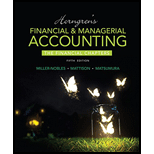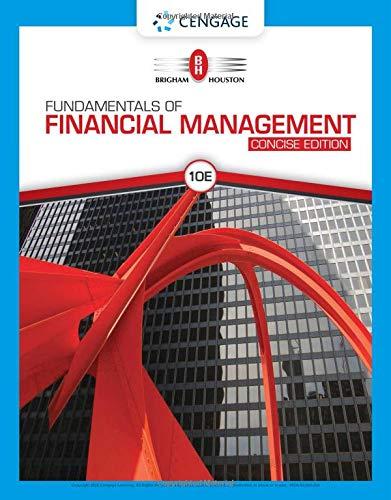
Trading Investments:
Trading investments are the investments in debt or equity securities where the investor holds less than 20% of the voting stock. The investor wishes to sell these investments at a short notice like in a few days, week, or months to generate some profit out of it. They are treated as current assets.
To identify: How the given investment would be classified.
Answer to Problem 1QC
When the investor invests in the debt or equity securities, holding less than 20% of the voting stock of the investee company, in view of selling them in the near future, then such investment is known as a trading investment.
Hence, the correct answer is option b. Trading investment.
Explanation of Solution
Justification for incorrect answers:
Option a. Significant interest investments are the equity securities where an investor holds more than 20%, but less than 50% of the voting stocks. Here, Railway I (investor) will own only 5% of the voting stock of Company P. Hence, option a. is incorrect answer.
Option b. Trading investments are short-term securities where the investor owns less than 20% of the voting stock of the investee company which are bought to sell in the near future to generate profits.
The investment made by Railway I is a trading investment as it represents 5% of voting stocks and investment was made for 3 months.
Option c. Held-to-maturity investment is the investment which is held till their maturity date. Here, Railways I is not planning to hold the investment till maturity, but is planning to hold them for only three months. Hence, option c. is an incorrect answer.
Option d. Controlling interest investments are the equity securities where an investor holds more than 50% of the voting stocks. Here, Railway I will hold only 5% of the voting stock of the investee company. Hence, option d, is an incorrect answer.
Justification for correct answer:
Option b. As the investor company (Railway I) is considering investing in the investee company (Company P) for a short period (three months), and the investment will represent less than 20% of the voting stock (5%) of the investee company, then such investment would be classified as a trading investment.
Hence, option b. is the correct answer.
Want to see more full solutions like this?
Chapter 10 Solutions
Horngren's Financial & Managerial Accounting, The Financial Chapters Plus MyAccountingLab with Pearson eText -- Access Card Package (5th Edition)
- Can you solve this financial accounting problem using accurate calculation methods?arrow_forwardDirect materials:475, Direct labor:385arrow_forwardBanner Electronics Corp. reported cash of $42 million at the beginning of the year, and by the end of the year, it was $38 million. The company's statement of cash flows reported cash from operating activities of $65 million and cash from investing activities of -$52 million. What amount (in $ millions) did the company report for cash from financing activities?arrow_forward
- Honda Corporation had beginning raw materials inventory of $34,500. During the period, the company purchased $128,000 of raw materials on account. If the ending balance in raw materials was $22,700, the amount of raw materials transferred to work in process inventory is?arrow_forwardCan you explain the correct methodology to solve this general accounting problem?arrow_forwardI am searching for the accurate solution to this financial accounting problem with the right approach.arrow_forward
 Financial Reporting, Financial Statement Analysis...FinanceISBN:9781285190907Author:James M. Wahlen, Stephen P. Baginski, Mark BradshawPublisher:Cengage Learning
Financial Reporting, Financial Statement Analysis...FinanceISBN:9781285190907Author:James M. Wahlen, Stephen P. Baginski, Mark BradshawPublisher:Cengage Learning Pfin (with Mindtap, 1 Term Printed Access Card) (...FinanceISBN:9780357033609Author:Randall Billingsley, Lawrence J. Gitman, Michael D. JoehnkPublisher:Cengage Learning
Pfin (with Mindtap, 1 Term Printed Access Card) (...FinanceISBN:9780357033609Author:Randall Billingsley, Lawrence J. Gitman, Michael D. JoehnkPublisher:Cengage Learning EBK CONTEMPORARY FINANCIAL MANAGEMENTFinanceISBN:9781337514835Author:MOYERPublisher:CENGAGE LEARNING - CONSIGNMENTCentury 21 Accounting Multicolumn JournalAccountingISBN:9781337679503Author:GilbertsonPublisher:Cengage
EBK CONTEMPORARY FINANCIAL MANAGEMENTFinanceISBN:9781337514835Author:MOYERPublisher:CENGAGE LEARNING - CONSIGNMENTCentury 21 Accounting Multicolumn JournalAccountingISBN:9781337679503Author:GilbertsonPublisher:Cengage Fundamentals Of Financial Management, Concise Edi...FinanceISBN:9781337902571Author:Eugene F. Brigham, Joel F. HoustonPublisher:Cengage Learning
Fundamentals Of Financial Management, Concise Edi...FinanceISBN:9781337902571Author:Eugene F. Brigham, Joel F. HoustonPublisher:Cengage Learning





